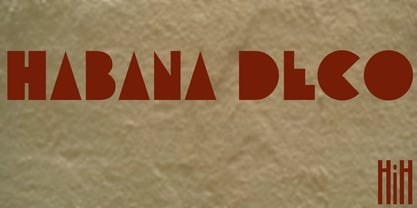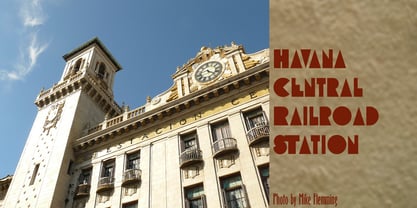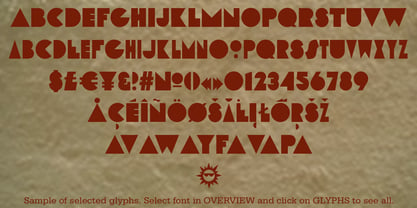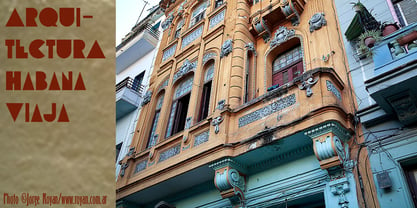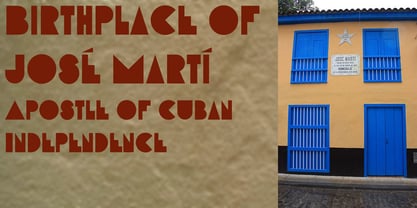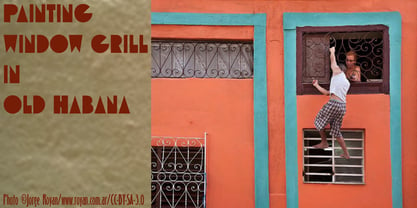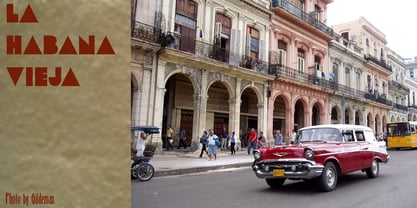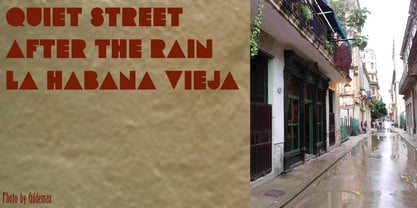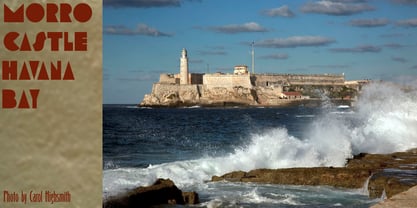Über HiH
HiH steht für Hand-in-Hand, denn ich könnte es nicht allein tun - nichts davon. Ich interessiere mich für die Geschichte genauso wie für Schriften und ich bin der festen Überzeugung, dass auch Schrift keine Insel ist. Damit meine ich, dass jedes Schrift einen Kontext und eine Geschichte hat und ein Produkt der Kreativität und der Bemühungen eines oder mehrerer Menschen ist. Da Alphabete dem Zweck der schriftlichen Kommunikation dienen, kann ein Schrift nicht TOTAL originell sein, sonst wäre es nutzlos. Ein Schrift muss zumindest anderen Schriften ähneln, die bereits existieren. Wenn ein Leser keine der Buchstabenformen erkennen kann, ist er auch nicht in der Lage, eines der Wörter zu lesen, die aus diesen Buchstaben gebildet werden, und es findet keine Kommunikation statt.
Im Laufe der Zeit entwickelte ich eine wachsende Abneigung gegen die auf die frühesten Foundrys zurückgehende Praxis des Kopierens und Umbenennens von Fonts ohne Namensnennung, so als ob jedes ähnlich aussehende Font das Produkt origineller und unabhängiger Bemühungen wäre. Ich fand das verwirrend und frustrierend, also begann ich damit, einigen der Fonts , die ich angesammelt hatte, den ursprünglichen Namen zurückzugeben. Als Nächstes war ich unzufrieden mit Fonts , wo Satzzeichen oder Sonderzeichen fehlten, die Teil des ursprünglichen Designs waren (oder hätten sein sollen), usw. Ich fing an, sie nach Bedarf hinzuzufügen. Dann ertappte ich mich dabei, wie ich einige der nicht-alphabetischen Zeichen neu entwarf. Ich finde, alle Zeichen sollten so aussehen, als gehörten sie zur Font und nicht irgendwo aus dem Müll gezogen. Ich denke zum Beispiel, dass eine schwarze Schrift Schrift einen Punkt haben sollte, der die gleichen Merkmale eines Breitfederzeichens wie die Buchstabenformen widerspiegelt. Wer zeichnet schon perfekte Kreise mit einem Breitfedergriffel? Andererseits, warum sollte jemand mathematische Symbole mit einer Kupferschrift haben wollen? Das ist wie Schwarzschrift in Kapitälchen oder eine geschwungene Version einer geometrischen Sans-Serif-Schrift. Sie verstehen, was ich meine.
Und dann gibt es noch all die wirklich großartigen viktorianischen und Jugendstilschriften Schriften , die ich nicht in digitaler Form finden konnte. Ich persönlich halte das 19. Jahrhundert (genauer gesagt, die Zeit von 1815 bis 1914) für das aufregendste in der Geschichte der Typografie - die Teenagerjahre, chaotisch, konfliktreich und voller Entdeckungen der rohen Kraft, die entfesselt wurde. Es gab kein Entkommen. Ich musste meine eigenen machen. Ich hoffe, sie gefallen Ihnen und sind Ihnen nützlich.
- Tom der Boxer, HiH Retrofonts
Zeichensätze
Wir verwenden einen Standard-Windows-3.1-Zeichensatz mit 213 sichtbaren Zeichen oder Glyphen und insgesamt 256 Zeichenslots (einige sind für Programmfunktionen reserviert und nicht sichtbar) für die Anzeige Schriften. Wir sind der Meinung, dass Unicode sehr gut für Textflächen geeignet ist, aber für die Anzeige oft zu viel des Guten ist. Wir verwenden Fontographer 4.1 und sehen gerne den gesamten Zeichensatz auf einem einzigen Bildschirm - mit Unicode ist das nicht möglich.
Wir weichen häufig vom Standard-ASCII-Zeichensatz ab, der unserer Meinung nach einige dumme Entscheidungen enthält. Suchen Sie nicht nach einem "logischen Nicht" in unseren Gesichtern. Als diakritische Zeichen (Akzente) verwenden wir in der Regel Akut ('), Gravis (`), Dieresis oder Umlaut (¨), Zirkumflex (ˆ), Tilde (˜), Cedille (¸) und Makron (¯). Die meisten unserer Fonts sind Wiederholungen. Vorrangig werden die Akzente und Sonderzeichen verwendet, die für die Muttersprache des ursprünglichen Designers erforderlich sind. Bringhurst listet 59 Buchstabenformen allein in römischen oder lateinischen Alphabeten auf (ohne kyrillische, griechische, hebräische usw.). Es gibt zum Beispiel vier Os: das Standard-O, das geschlitzte O, das gehörnte O und das offene O. Wenn man die verschiedenen Akzentkombinationen hinzurechnet, von O-akut für bis zum offenen O-ogonek, kommt man auf insgesamt vierzig Variationen des Buchstabens O allein. Die alte Weisheit, dass man nicht alles für alle sein kann, trifft hier offensichtlich zu.
Anmerkung: In der österreichisch-ungarischen Monarchie waren Deutsch und Ungarisch die offiziellen Verwaltungssprachen. Tschechisch, Polnisch, Serbokroatisch und Slowenisch waren zwar regional wichtig, aber es war ein großes politisches Problem, dass sie keinen offiziellen Status hatten. (Es gab Zeiten, in denen ihr Gebrauch sogar verboten war.)
Wir versuchen, Ligaturen und alternative Zeichen, die Teil des ursprünglichen Entwurfs waren, einzubeziehen. Wir werden auch Sonderzeichen oder Dingbats einbeziehen, wenn wir es für angemessen halten. In Musterbüchern findet sich eine Fülle von Druckerornamenten. Viele wurden bereits von Dover und anderen in Rasterform digitalisiert und sind in preiswerten Sammlungen auf CD erhältlich.
Dekorative Initialen
In der Regel versuche ich, Zierinitialen mit passenden Kapitälchen, falls vorhanden, oder mit einem passenden oder harmonischen Kleinbuchstaben zu kombinieren. Während die Kleinbuchstaben oder Kapitälchen mit Akzenten versehen werden, ist dies bei den Zierinitialen nicht der Fall, mit Ausnahme der C-Cedilla und der N-Tilde. Gemäß
Das Chicago Manual of StyleFranzösisch, Portugiesisch und Spanisch können ohne Akzente auf großgeschriebene Vokale gesetzt werden; und Deutsch kann durch die Verwendung von Ae, Oe & Ue anstelle der Umlaute in Großbuchstaben gesetzt werden. Italienisch variiert: Akzente sind für Überschriften erforderlich, aber nicht für Text. Æ und Œ werden in der Regel nicht in verzierter Form verwendet, es sei denn, sie sind Teil des Originaldesigns.
Ausgewählte Bibliographie
Die unten aufgeführten Bücher sind die, auf die wir am häufigsten zurückgreifen. Jedes dieser Bücher hat etwas Einzigartiges zu bieten. Zusammen können sie den Kern einer nützlichen typografischen Bibliothek bilden. Es sind keine Musterbücher aufgeführt, da die wichtigsten Bücher weit über das hinausgehen, was sich die meisten Menschen leisten können, und in die Tausende von Dollar gehen. Es ist zu hoffen, dass die Träger großer historischer Bibliotheken, wie die Columbia University in New York und die St. Bride's in London, nach und nach die wichtigsten digitalisieren und auf ihre Websites stellen werden. Spenden könnten sie dazu ermutigen - es wäre ein teurer und zeitaufwändiger Prozess.
- Annenberg, TYPE Foundrys OF AMERICA AND THEIR CATALOGS (Oak Knoll Press, New Castle, Deleware, 1994) ISBN 1-884718-06-X. Das Ziel dieses Buches und ähnlicher Bücher ist es, die Geschichte der Metallschrift festzuhalten, bevor es zu spät ist. Es handelt sich um eine Liebesmüh, und wir sind denjenigen zu Dank verpflichtet, die sich die Mühe gemacht haben, denn diese Geschichte gehört uns allen.
- Bain & Shaw, BLACKLETTER: TYP UND NATIONALE IDENTITÄT. (Princeton Architectural Press, NYC 1998) ISBN 1-56898-125-2. Nützlicher Beitrag zum Verständnis des Zeitgeistes der Schwarzschrift, der den vielen unproduktiven negativen Kommentaren von Lesern, die nur mit römischen Buchstabenformen vertraut sind, entgegenwirkt. Besonders die Fraktur kann schwierig sein, wenn man sie nicht gewohnt ist, aber sie funktioniert im Deutschen besser als im Englischen. Schauen Sie sich jetzt die burmesische Schrift an. Kapitel über das, was die Herausgeber "German Hybrid Schriften" nennen: Behrens, Eckmann, Künstler, etc.
- Bringhurst, THE ELEMENTS OF TYPOGRAPHIC STYLE (Hartley & Marks, Vancouver [in der Nähe des Wohnortes des Autors] 2004. ISBN 0-88179-206-3 (pbk). Ein unvergleichliches, unverzichtbares Buch über diszipliniertes Seitenlayout und Typografie mit einer starken historischen Perspektive. Bringhurst ist ein bedeutender Kritiker einer engstirnigen Typografie.
- Gray, NINETEENTH CENTURY ORNAMENTED Schriften (University of California Press, Berkeley & LA 1976) ISBN 0-520-03074-5 Vergriffen. Finden Sie es gebraucht und kaufen Sie es. Schätzungsweise $40. Ursprünglich veröffentlicht von Oxford University Press im Jahr 1938.
- Jasper, Berry & Johnson, ENCYCLOPAEDIA OF Schriften, 4. Auflage (Cassell & Co., London 2001); ISBN 1-84188-139-2 (pbk). Hinweis: frühere Ausgaben sind auch auf dem Gebrauchtbuchmarkt zu erwerben.
- Lewis, TYPOGRAPHY DESIGN AND PRACTICE (Taplinger Publishing, NYC 1978) ISBN 0-8008-7922-8 (pbk). Nützliche Erörterung der künstlerischen Entwicklungen, wie sie sich auf die Display-Typografie ab 1800 auswirkten. Stellt eine aufschlussreiche Verbindung zwischen Schwarzschrift und serifenlosen Schriften her.
- McGrew, AMERICAN METAL Schriften OF THE TWENTIETH CENTURY, 2nd Edition (Oak Knoll Books, New Castle, Delaware 1993); ISBN 0938768-39-5 (pbk). Enthält Schriften aus dem 19. Jahrhundert, die im 20. Jahrhundert weiter gegossen wurden, wie Pekin.
- Petzendorfer, TREASURY OF AUTHENTIC ART NOUVEAU ALPHABETS, DECORATIVE INITIALS, MONOGRAMS, FRAMES AND ORNAMENTS (Dover Publications, New York 1984); ursprünglich veröffentlicht von Julius Hoffmann, Stuttgart 1903 unter dem Titel SCHRIFTENATLAS NEUE FOLGE: EINE SAMMLUNG VON ALPHABETEN INITIALEN UND MONOGRAMMEN ZUSAMMENGESTELLT VON HOFRAT L. PETZENDORFER. ISBN 0-486-24653-1 (pbk).
- Solo, THE SOLOTYPE CATALOG OF 4,147 DISPLAY Schriften (Dover Publications, New York 1992) ISBN 0-486-27169-2 (pbk). Wie der Titel andeutet, war das Buch als kommerzieller Katalog und nicht als historische Aufzeichnung gedacht. Aufgrund der Praxis, Schriften umzubenennen, um diesen Zweck zu unterstützen, und des Fehlens weiterer Informationen darüber, wo die Schriften gesammelt wurden, ist das Buch weniger nützlich als es hätte sein können. Es wäre wunderbar, wenn eine begleitende Datenbank erstellt würde. Viele Gesichter sind einfach nirgendwo anders zu finden.
- The University of Chicago Press, THE CHICAGO MANUAL OF STYLE, 14th Edition (The University of Chicago Press, Chicago & London 1993) ISBN 0-226-10389-7. Die fünfzehnte Auflage ist jetzt erhältlich. Wahrscheinlich die beste Referenzquelle für die praktischen Details der angewandten Typografie.
Mehr lesen
Weniger lesen
